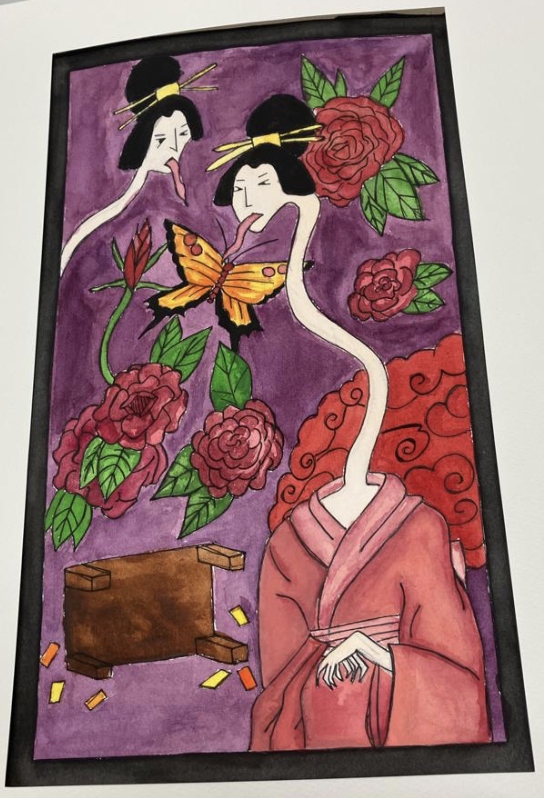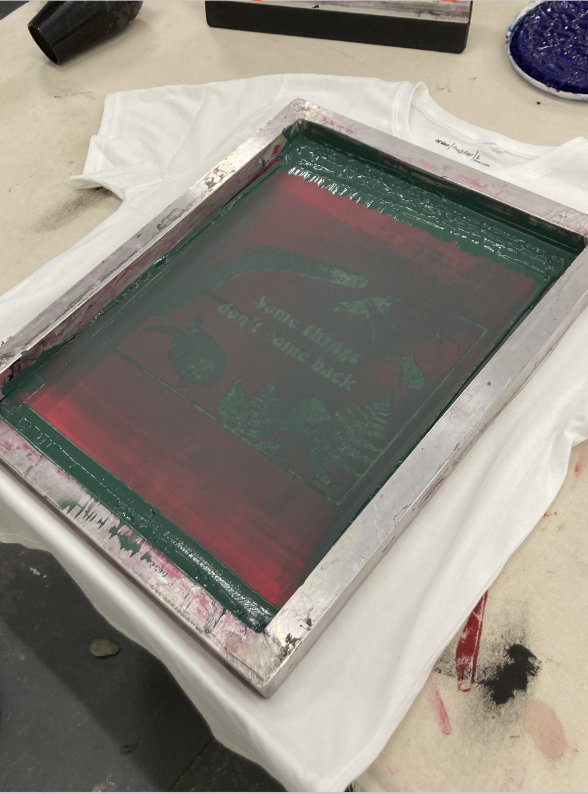Driving Question:
How can Japanese visual storytelling techniques document historical and cultural events?
Module Summary:
The Manga Evolution module explored how Japanese visual storytelling techniques document historical and cultural events. The module covers traditional Japanese art forms like sumi-e (ink painting), ukiyo-e (woodblock printing), kamishibai (oral storytelling), and manga (contemporary art form).
The students practiced dynamic movement in sumi-e, created layered prints in ukiyo-e, analyzed anime like “Demon Slayer,” and learned to read and draw manga. They visited the Manga Museum in Kyoto, attended drawing workshops, and honed their storytelling skills by creating narrative storyboards based on photos taken in Hiroshima.
Field experiences in Kyoto and Tokyo included visits to the Studio Ghibli Museum, TeamLab Planets, and the Tokyo National Museum. The final project required students to choose a significant historical or cultural event in Japan, create an eight-frame storyboard, and bring one panel to life using their chosen medium.
Esha V.’s final product is a scaled-up version of a Hanafuda card of her own design. This artwork incorporates watercolor, an element she integrated based on her experience with sumi-e. Through practicing sumi-e, Esha learned about opacity and color, skills she then applied to her final product. By iterating on her design and creating multiple drafts before commencing the final piece, she ensured she evaluated numerous ways of presenting her ideas. This thorough process allowed her to ultimately decide on a composition that effectively communicates the story within the frame.

For her final project, Nefertari J. chose a historical and cultural event to explore the meaning of being in Japan: the Atomic Bomb. Creating a storyboard helped her turn complex events into a coherent visual story, enhancing her narrative skills, whilst the module’s workshops and practice improved her artistic abilities. She examined the distinctions between Japanese culture and her own, particularly the Atomic Bomb.

Balancing research, creativity, and technical skills, she thoughtfully selected scenes, showcasing her growth in visual storytelling. The project refined her techniques and allowed her to experiment with traditional art forms.






